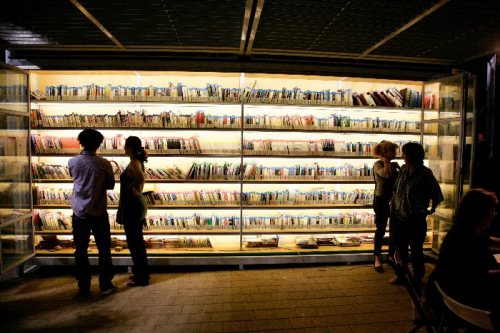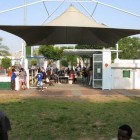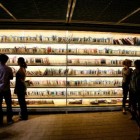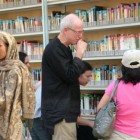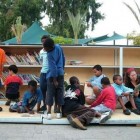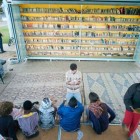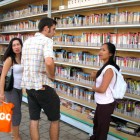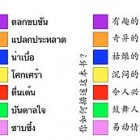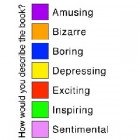Harpo provided funding to support Romy Achituv and Arteam’s development of The Garden Library Database Visualization Project .
The Garden Library is an outdoor, open-air library, located in a public park in the center of Tel Aviv. Established in 2009 to serve the community of refugees and migrant workers that congregate in the park on weekends, the library has no walls and no door, and is comprised of two bookcases supported by the walls of a public shelter located in the heart of the park. The library contains approximately 3,500 books in 16 languages.
ARTEAM sought to break away from traditional categories of classification and to realize a sorting and indexing system that would playfully manifest the values of an open society. Accordingly, the books are not catalogued by genre or author name, but dynamically, according to reader input. Inspired by the freedom (both actual and symbolic) inherent in digital random access processes, ARTEAM sought to apply the same non-linear algorithmic logic to the physical holdings of the library and to transform the book collection itself into a physical database, and its presentation – the dynamic organization of the books on the physical shelves – into a transient visual snapshot thereof.
ARTEAM seeks to create a system that anyone could impact and in which every participant’s input is counted. The placement of each book is therefore decided not by popular vote, but by the last reader. On the inside back cover of each book is a sticker asking (in the language of the book): “How would you describe the book?” and listing seven emotions the book may evoke: amusing, boring, bizarre, depressing, exciting, inspiring, sentimental. A reader returning a book is asked to choose the word which best describes his or her feeling, and the color-coded judgment is added to the past history of responses on the spine of the book. The book is then placed back on the shelves according to its new color-coded, emotional classification. While the physical library displays the books’ current categorizations, the library website will offer interactive access to the library’s “emotional history.”
This project was funded as part of the foundation’s 2011 funding cycle, which explores the interchange and dialogue between the non-locality of the digital world and the existential physicality of our everyday environment.
For more information about this project, visit The Garden Library

